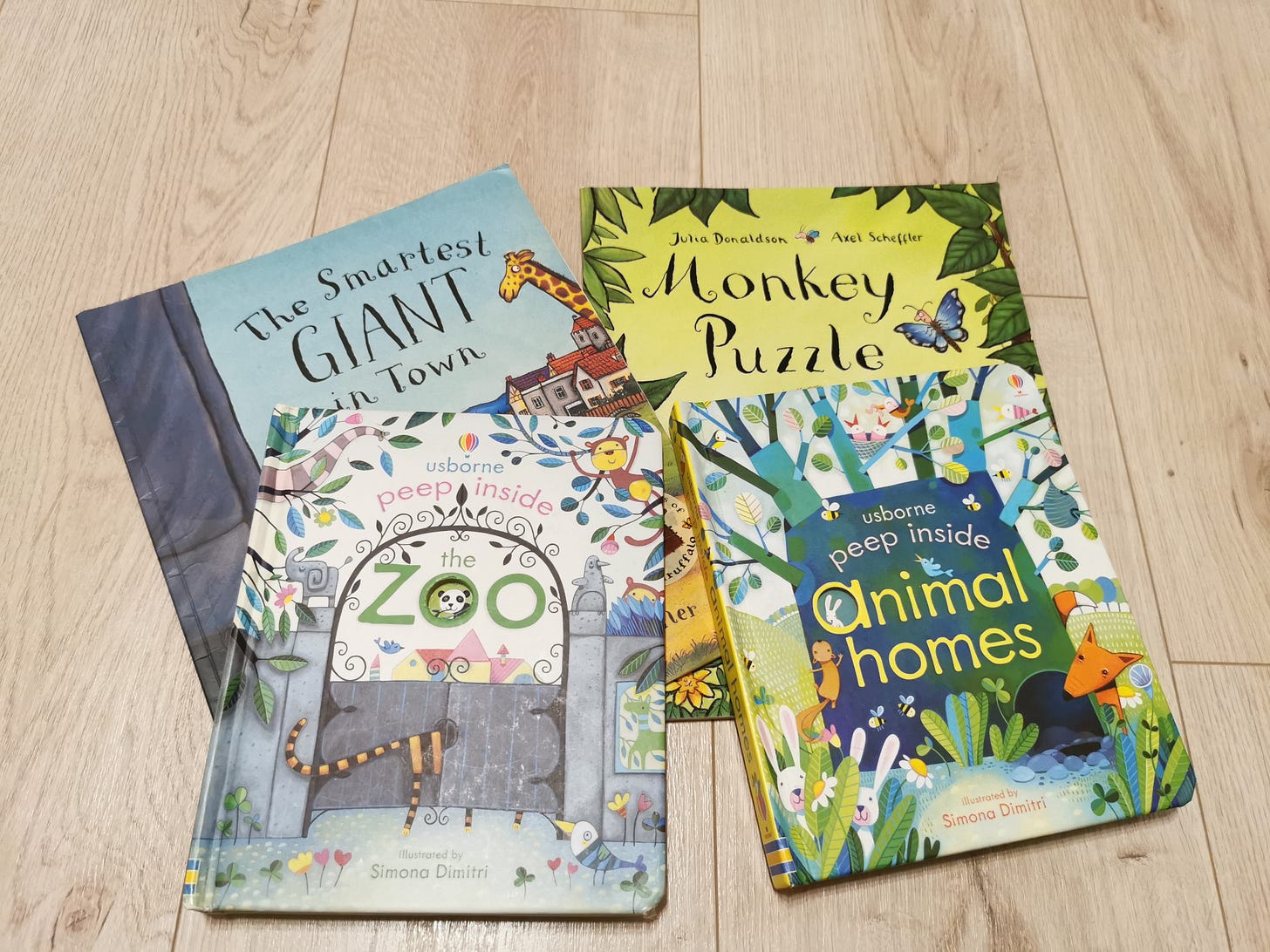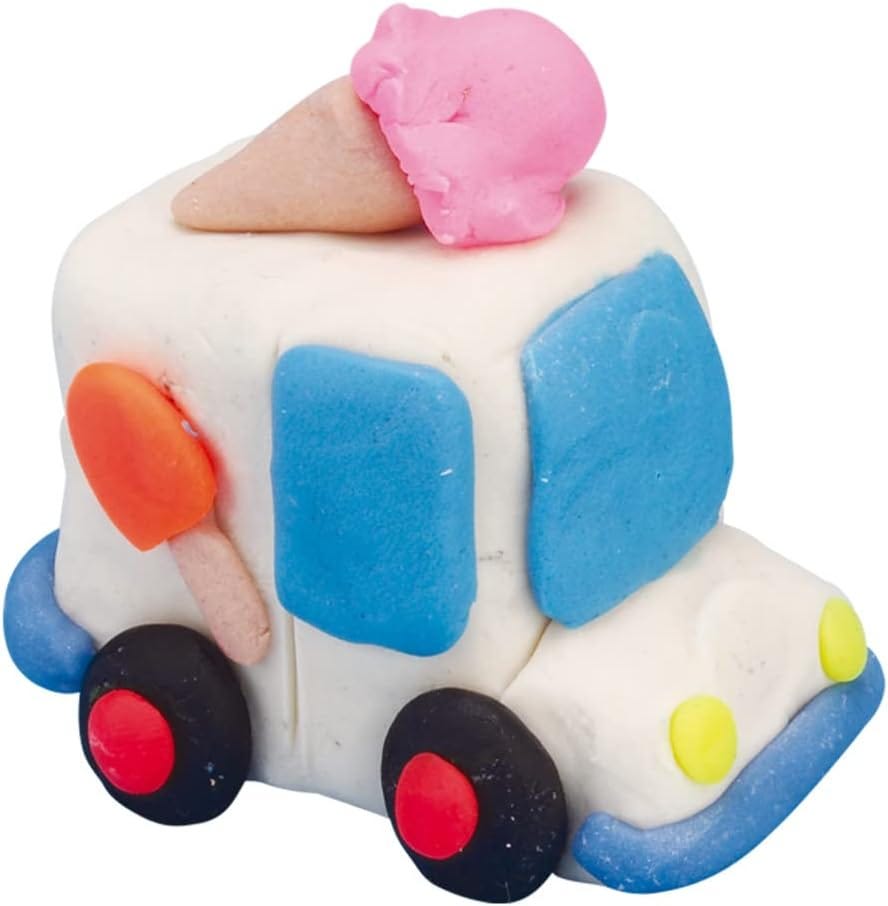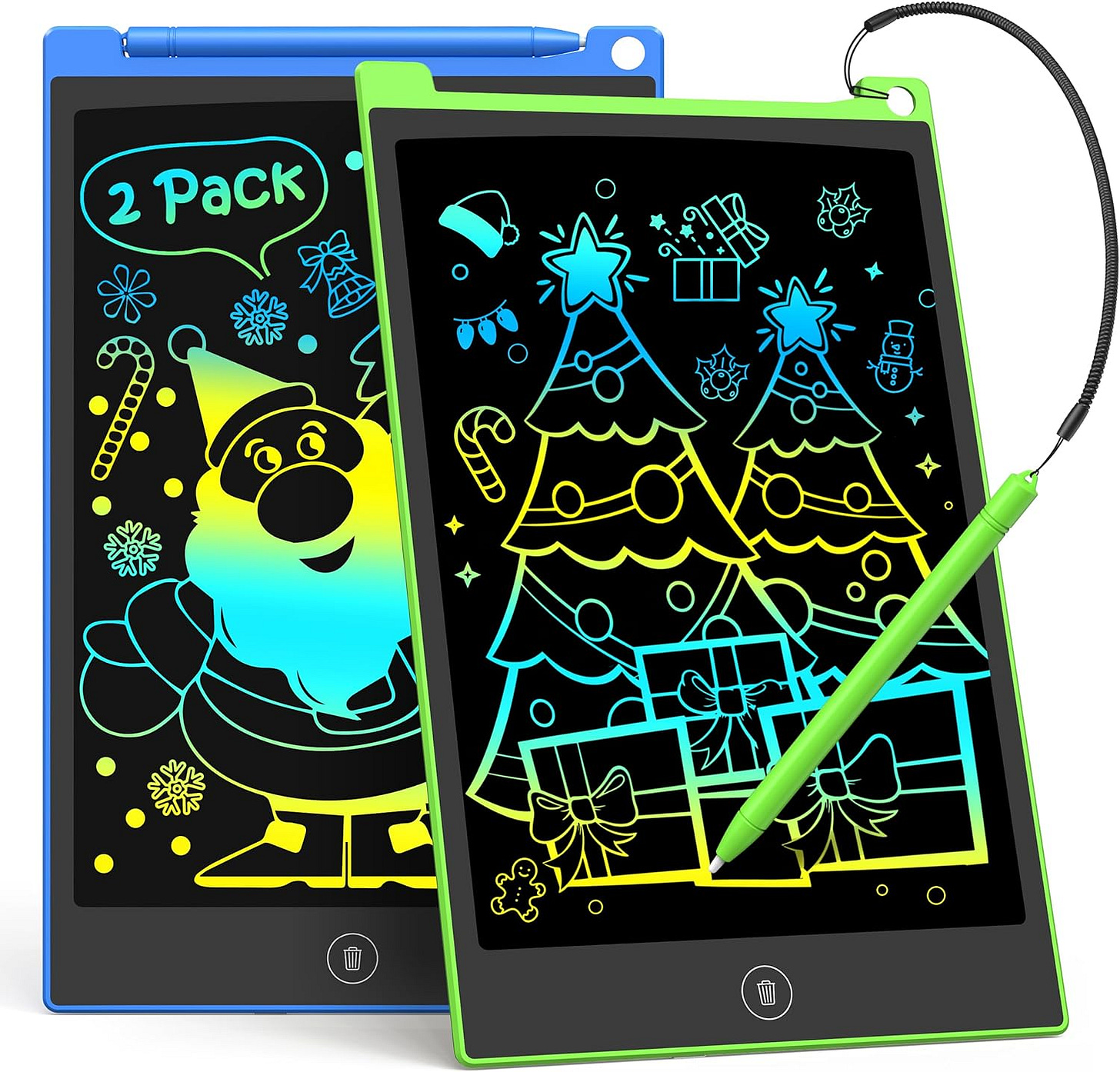How to jumpstart your child's brain development
Unlock your children's full potential through a balanced approach that nurtures both the left and right brain.
I'll confess - I used to be that competitive, overachieving dad who wanted his toddlers to walk, talk, and read earlier than their peers.
Of course these were all unrealistic expectations, and whilst children are naturally quick to absorb new skills, it is important not to overload them. After all they are children and they still need to do other ‘fun’ things.
But that doesn't mean we can't gently nudge them in the right direction.
In this post, I'll share the strategies my wife and I used to 'jumpstart' our children's cognitive and other skills development.
Our goal was to create an ideal learning environment that allowed them to acquire these skills as naturally as playing.
Left Brain vs Right Brain
Since we are talking about the brain, I think it’s a good idea to start with what we know about it.
The human brain is divided into 3 regions: Cerebrum, Cerebellum and Brainstem.
Cerebrum is the biggest part, taking up more than 85% of its total weight, and it's responsible for our reasoning, learning and emotions.
Cerebrum itself is divided into 2 hemispheres, the left and the right.

The left side is responsible for the following functions:
Logic
Sequencing
Language development
Thinking in words
Fact-checking
Interest in math and sciences
Analytical skills
The right side is responsible for the following functions:
Intuition
Imagination
Emotional intelligence
Holistic Thinking
Interest in the arts
Attention to context
Visual skills
Understanding these brain’s characteristics will help us to find balance in choosing activities and tools to ‘train’ our children.
Training the Left Brain
The goal for the left brain training is to develop skills for:
Understanding and producing language
Logical and analytical thinking
Mathematical reasoning and problem solving
Here are some of the things I did or tools I used with my children:
Talking with and speaking to them
Like ‘all the time’!
The more you talk to them the more they would be familiarised with hearing the spoken language(s), especially the parent’s native tounge(s).
Eventually my childrend tried to mimic what we said and started to utter some of the words. The feeling when I heard they spoke their first word was magical.
If you're in a mixed couple like us, speaking different languages is a great bonus! Research suggests that exposing children to different languages from a young age can have positive impacts on their brain development and language abilities. The fact that our children can speak 2 languages fluently today is the proof of that.
They mixed words from the 2 languages at first, but now they are able to switch between them depending on the context and with whom they are speaking effortlessly.
Reading to and with them
All of you smart readers would already know and recognise that reading is one of the most important habit every human being should have. And the earlier you cultivate this habit the better. This is what I did to and with all my children.
Since they were a baby, I would sit down with them and read to them.
I used some techniques that I think it helped greatly during this activity:
I picked and chose visually attractive books because I love to point to the pictures while I read to them. This helped them to associate the word with the object. It also helped them to see shapes and colours.
When the children were older and able to speak, I asked them questions about the page. For example: “Show me which one is the chicken”, or “Tell me what happened to so and so character”. This way the reading became more interactive, and not just passive listening. It also trained them with comprehension.
When the children could read by themselves, I would ask them to read to me instead. This further laid down the foundation of this habit of reading by themselves.
We went to library with them and let them pick books they wanted to borrow.
We give them books as present (birthday or Christmas, etc), as often as toys or maybe more (judging from how many books we have currently in their cupboard).
Some of our favourite book writers or publication are as follows:
What are your favorite children book’s writer or publication? Share in the comment!
Educational Toys
We were in favour of buying our children educational toys which helped build their logical and problem solving skills as well as develop their fine motoric skill.
We occasionally bought novelty toys for them, but such instances were rare.
So, here are some types of educational toys that we’ve been buying our kids. By no means they are an exhausted list, there are so many out there, you can explore and take a pick yourself, the important here is the idea.
Puzzles
Playing puzzles would not only engage the child’s left brain (logical thinking, problem-solving, attention to detail, and fine motoric skill) but also would stimulate the right brain (creativity, imagination, spatial awareness).
We introduce our children to puzzles since they were able to hold objects. We started with big blocks puzzle, then big size flat wooden puzzles, and graduating with the normal many-pieces puzzles.
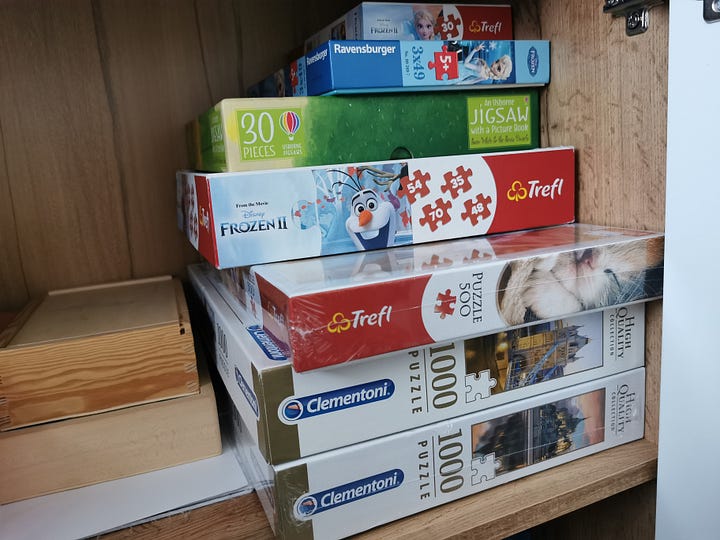
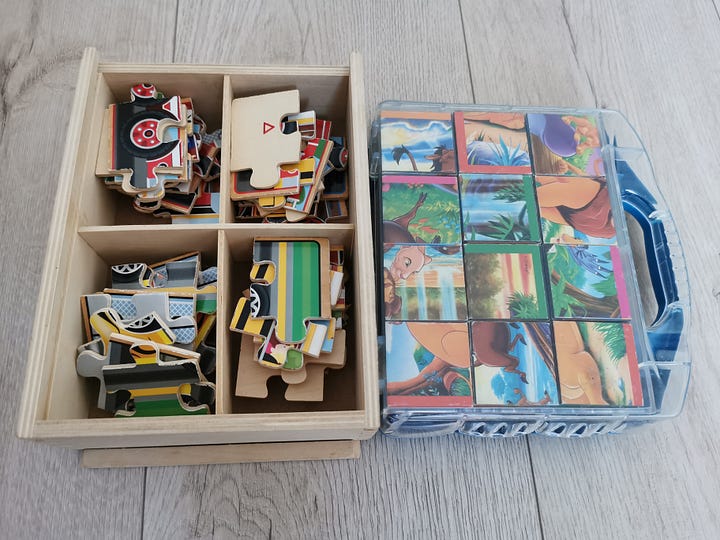
Legos
Everyone loves Lego! My kids were not exception (and their father too)!
Legos and other types of construction toys are a staple and a favorite in my family. Similar to puzzles, these building and creation toys engage both side of the brains.
But whilst puzzles are limited to a set of ‘shapes’, construction toys go beyond this.
They encourage ‘unlimited’ creativity and imagination.
With my kids I started with Duplo or its variant when they were still a toddler, but then quickly went crazy with the real Lego.
Then as they grew I got them other types too, here are some of our favorites:
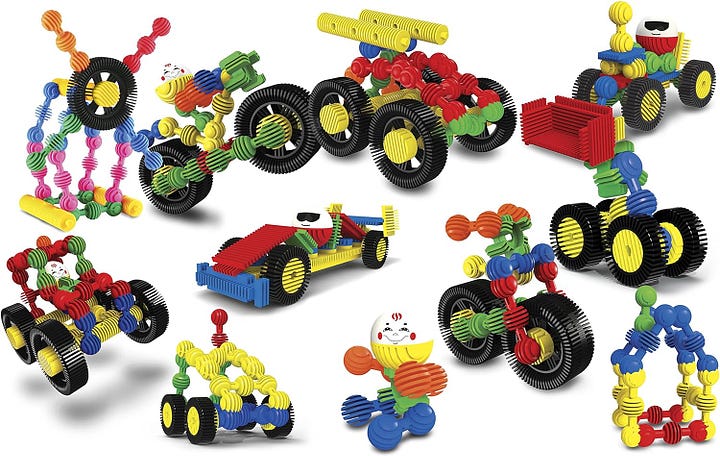
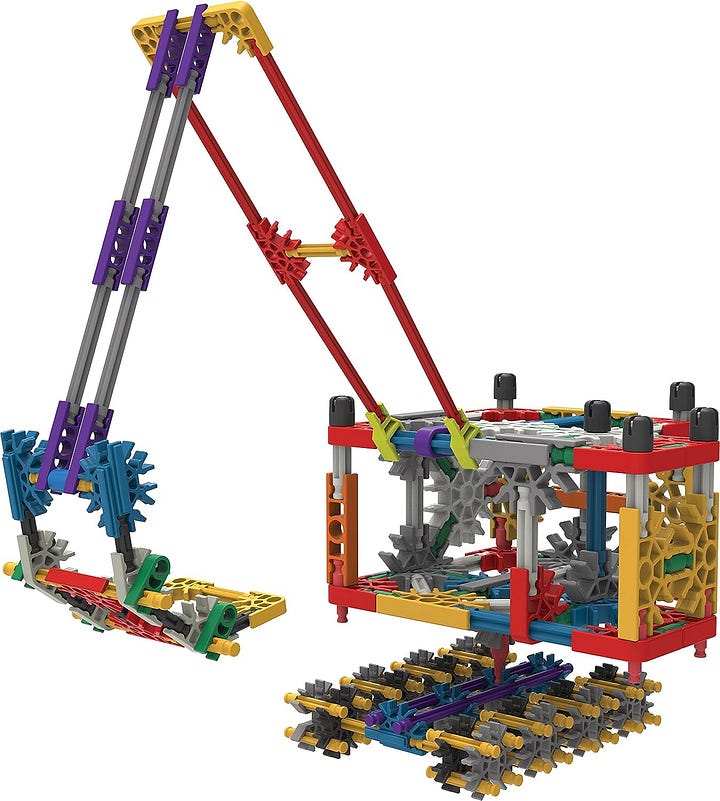

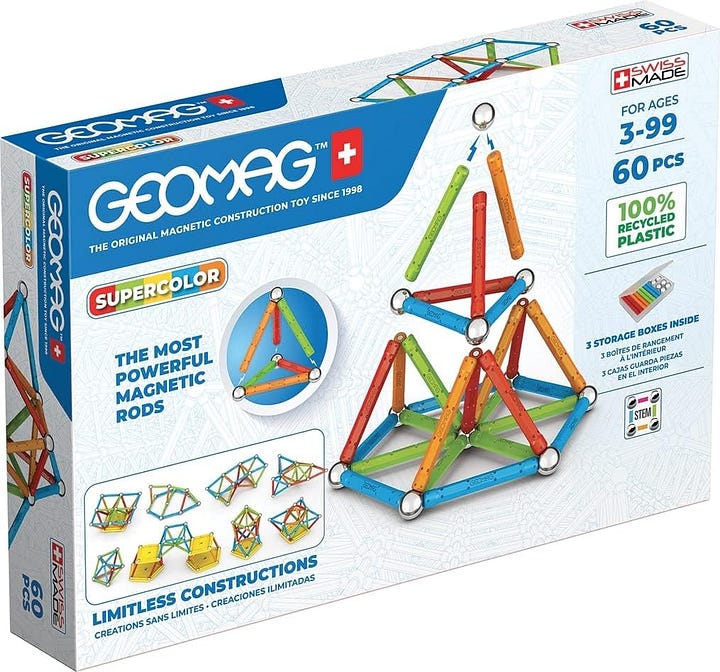
What is your favourite construction toys?
Writing
The idea was to get the kids to become familiar with writing tools. In the early days, before school age, we got them jumbo coloring pencils, then graduated to a medium size (in diameter) pencil and finally normal size pencils. There is also the triangular shape colouring pencils. All of these different shapes of pencils help the children to train to hold the the writing tools.
We taught them how to ‘hold’ a pencil properly. We have a strong opinion on this as we saw many young children hold their pencil inappropriately. And you know this kind of ‘bad’ habit would carry to their adult years.
As for what to write on, we just got them some normal white sheet of paper where they could ‘draw’ whatever they want (training the right brain).
We also gave them writing exercise books. These are the type o books where the children could learn to ‘draw’ lines, or curves, or any other shape. This prepared them for the real deal when they finally went to the nursery school.
Hand Eye (and all part of bodies) Coordination
If you want your kids to be future sportsmen or women, this skill is crucial to develop.
Any activity that involves speed and precision, limbs dexterity and flexibility are ‘game’.
For example we got our kids:
Tiny ball, small ball, medium ball, football, softball, volleyball, basketball.
Badminton set, Softball bat, Archery set, Dart board.
Inline skates, Ice skates, Skis (the snow variety).
Trampoline.
Scooter and Bikes. This is a classic - trust me the moment you see your kids ride a bike without you holding them is one of the proudest moments of your life.
Many of these activities would involve the right brain too. In fact they involve ALL parts of the brain and all other part of the body come to think of it.
Training the Right Brain
The goal for the right-brain training is to develop:
Imagination and Creativity
Thinking outside the box
Visual acuity
Spatial awareness
Basically the ‘fun’ stuff 🙂
Here are some of the things I did or tools I used with my children:
Playdoh
My kids loved them (and their parents too for that matter). I used to play with my kids a lot creating things with playdoh.
You can actually make Playdoh yourself at home (so to be sure that it’s safe just in case your toddler eat it), you should be able to find the recipe on the net.
I won’t say too much here, I think everyone knows how cool playdoh is and its positive effect towards development of children’s creativity.
Legos and other building blocks type toys
When the kids had to follow the instructions to build a specific thing, the left brain would engage in this activity. But after that, when they were free to build anything they wanted, the right brain took over.
For me building Legos were the most fun and rewarding activities I did with my kids.
Free Drawing
Apart from getting them the usual pencil and paper to draw on, we also got them one of those erasable drawing pads. This was fun and there was the benefit of exploring the kids’ imagination without us worrying that we ran out of papers.
Songs, Music and Playing Instruments
Music has been known to have a profound impact on brain development. Exposure to music at a young age can improve cognitive skills such as memory, attention, and problem-solving.
Also from psychological point of view music has the power to evoke emotions, helping children understand and express their feelings.
As an added benefit, music has a calming effect and can reduce stress and anxiety in children.
Music is big in our family. My wife and I, both singers and choir participants during our youth, wanted to encourage our kids to the same area of interest without being overly pushy.
So since they were very young we already exposed them to songs and music by listening to our music collections and singing together whenever and whereever opportunity arised.
From everything that we’ve done together as a family, we found that music has been the one single unifying force under which we have found solace through the most joyful time and the darkest days.
Playing Games
We love playing games together! This could be any game, sports game as I mentioned above, board games and … I have to say … computer games.
Playing board games in particular has been our favorite time-passing activities. These games are great in engaging even both sides of the brain.
One of our favorite games is called Dixit. It’s a fun and beautiful game, and it really involves a lot of imaginations. I can’t recommend it high enough, we kept gifting it to other families and all of them agreed that this is a great game.
Of course we also play other type of games: card games, dice based games, trivia based games, we even have a game called Cortex 🙂.
PS: I’m looking for interesting board games. Let me know if you have any recommendations.
On the topic of computer games, consoles or mobile games, obviously some cautions need to be observed.
These electronic games are really good to train hand-eye coordination and also to develop strategic thinking. Often they also involve some creativity and imagination.
But we need to be careful to keep it in moderation.
It’s a sloppy slope, and it’s a thin line between having fun and becoming an addict.
The most important thing: Play Together
What ever you do, in which ever activity you choose, or which ever tools or toys you use, the most important thing of all is that:
You do it together - as a family!
Your active involvement in this whole process of your child would jumpstart their brain development to even a higher level.
But remember, it's not about pushing them too hard, but rather creating an environment where learning is a natural part of play.
Embrace the journey, and watch your child's incredible mind flourish in front of your eyes.




